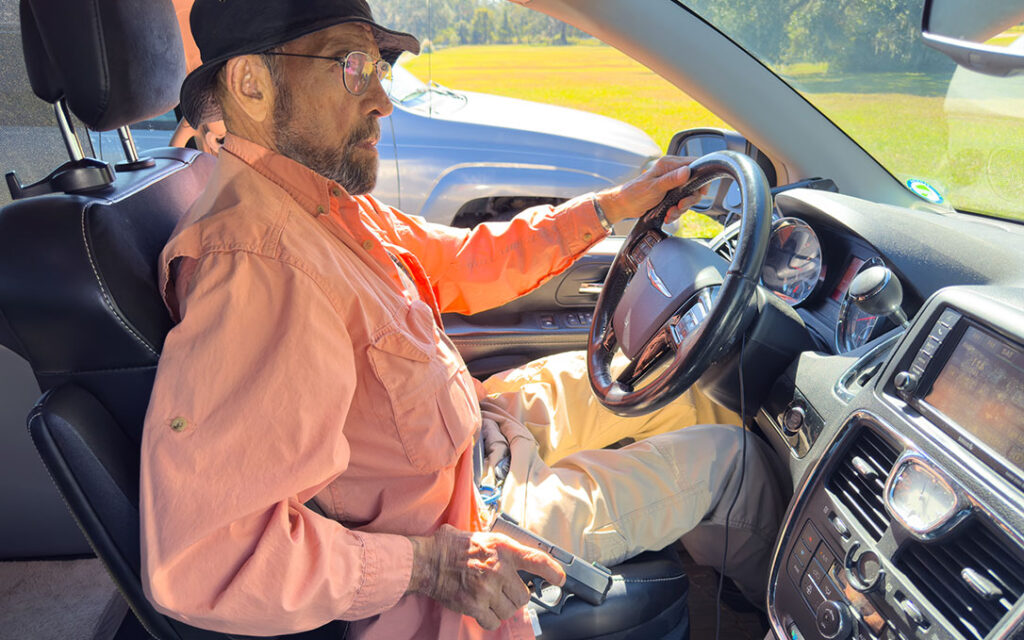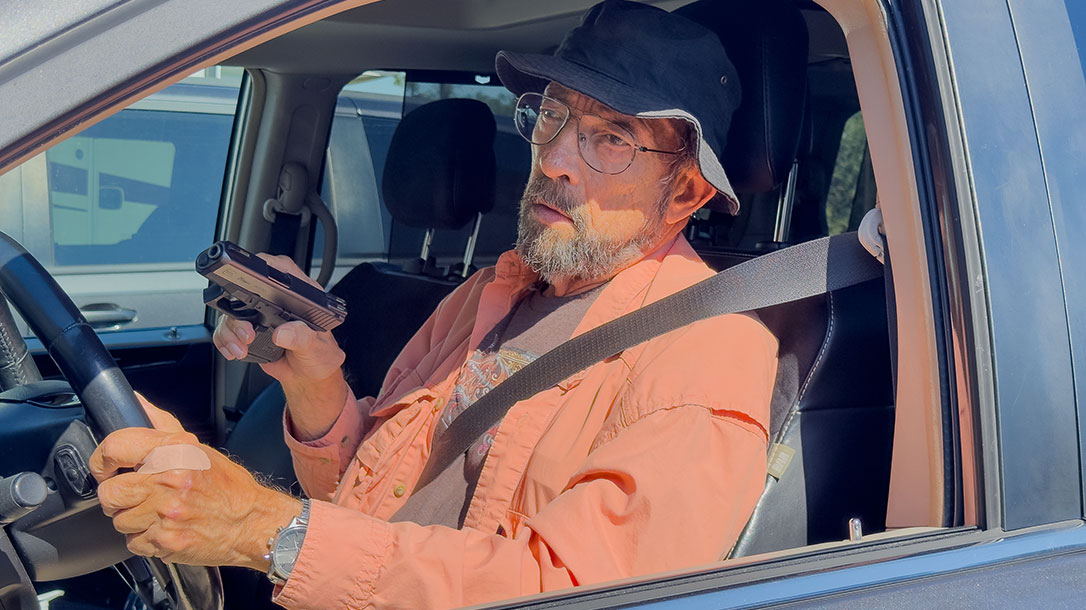The use of deadly force is always ugly. Likewise, it can upset people so greatly that even trained legal minds allow emotion to overcome logic and law. However, in the case of carjackers, are there circumstances where deadly force can be used against them? We’ll take a look at some cases that answer that question.
Using Deadly Force Against Carjackers: A Case Study
As an example, I offer an article from nearly a quarter-century ago. It is titled “Louisiana’s New ‘Kill the Carjacker’ Statute: Self-Defense or Instant Injustice?”
It appeared in JOURNAL OF URBAN AND CONTEMPORARY LAW. When even a peer-reviewed article in a law journal can get these things wrong, we know that deadly force law has apparently become a stepchild in law school curricula.
Advertisement — Continue Reading Below
The author, Susan Michelle Gurling, was addressing a statute that had been recently passed in Louisiana. It extends the Castle Doctrine to one’s vehicle. As such, it allows the use of deadly force if a carjacking victim reasonably believes he or she is in deadly danger from the carjacker.
She wrote, “The statute imposes no duty to retreat, but instead justifies homicide committed by a passenger or driver inside the vehicle against an individual who is attempting to unlawfully enter the vehicle, if the passenger or driver ‘reasonably believes’ that deadly force is necessary either to prevent the individual’s unlawful entry or to force the individual out of the vehicle.’”
Ms. Gurling flatly states, “The new statute goes too far, not only because it allows Louisiana motorists to use deadly force to combat the mere fear that any unlawful force will be used against them, but also because it justifies homicide for the sake of protecting mere personal property. Furthermore, under no circumstances does the statute impose a duty to retreat. Therefore, the statute is dangerous and extreme and should be repealed.”
Advertisement — Continue Reading Below
I would respectfully submit that Ms. Gurling was unclear on the concept.
The Danger in Question
A Google search in early November of 2023 for “people killed by carjackers” showed more than ten million hits. Obviously, that didn’t account for that many people murdered by carjackers, but rather that many stories about it happening. The point is that it happens and happens enough to worry about.
The intended victim cannot read a criminal’s mind and divine that person’s exact intent. Similarly, perhaps even the criminal cannot predict his own reaction to an uncooperative victim who attempts to flee.
Advertisement — Continue Reading Below
One guiding standard in the judicious use of lethal force has always been commonly known as the Reasonable Man Doctrine. It asks the critical, determinative question, “What would a reasonable and prudent person have done, in the exact same situation as (the shooter) knowing what they knew at the time?”
The Presence of Deadly Danger
Ms. Gurling herself cites in her own article the case of what she calls “…the ghastly carjacking of Pamela Basu, in which Basu was killed after being dragged behind her car and after her infant daughter was tossed onto the street, prompted Congress to legislate carjacking as a federal offense.” Let’s call that Case One.
Consider Case Two. A 60-year-old man was dragged from his new Toyota and beaten to death by carjackers on a Philadelphia street. He faced a clear-cut disparity of force even though no guns were apparently employed by the criminals. He had no gun with which to protect himself.
Advertisement — Continue Reading Below
The lesson is that the victim must both sincerely and objectively believe that they are in deadly danger. When a criminal actor points a deadly weapon at us, we have no reasonable, prudent conclusion to come to other than that he is prepared to carry out his at least implicit, and often explicit, threat to kill us if we do not bend to his will.
Because this behavior is so aberrant and dangerous, we cannot be certain he won’t kill us even if we obey.
Advertisement — Continue Reading Below
Not Mere Car Theft
Let’s be clear: it’s danger to the motorist and occupants that warrants use of defensive force, not mere car theft.
In Case Three here, a man in Kansas City was charged with murder when he shot and killed a man who was driving away in the shooter’s car. The prosecution theory is that he apparently was in no danger. According to them, he unleashed the two shots in question solely to retrieve his vehicle.
We see the stark difference between Cases Two and Three. In Two, the murder victim could have justifiably saved his life if he had only had a gun. In Three, it was property and not life on the line when the now-defendant fired, according to the prosecution.
Advertisement — Continue Reading Below
Ms. Gurlin herself gives us what I’ll call Case Four:
“On November 3, 1997, the first Louisiana citizen took advantage of the ‘Kill the Carijacker’ statute. That night, three men spotted twenty-one-year-old Aaron Bottoms and a friend driving a Monte Carlo. After pursuing Bottoms for several miles, one of the men, Ernest Allen, approached the vehicle and pointed a semi-automatic weapon at Bottoms’ head.
“In response, Bottoms drew a gun and shot Allen. Bottoms stated that ‘he didn’t think for a second about the ‘Shoot the Carjacker’ law, he just wanted to save his own life.’ Sheriff Harry Lee stated that although he personally found Bottoms’ actions permissible irrespective of the ‘Kill the Carjacker’ statute, the existence of the statute legitimized his decision not to arrest Bottoms.
Advertisement — Continue Reading Below
“Representative Bruneau remarked that Bottoms’ was the classic case with which the ‘Kill the Carjacker’ statute was designed to deal.”
The Danger of Retreat
Ms. Gurlin seems to bemoan the fact that the Louisiana statute eliminated a retreat requirement. But she does not mention the fact that even where retreat is required, it is only demanded when it can be accomplished in complete safety to oneself and others. No victim’s car can outrun a bullet.
Consider Case Five. In the spring of 2023, in the Bronzeville section of Chicago, a young carjack victim tried to accelerate away from the armed carjacker, who opened fire. The young man died from the multiple shots the criminal fired into the vehicle. The young woman with him was also wounded.
Advertisement — Continue Reading Below
“Good Carjacker Shoots”
In any armed robbery, deadly force defense is authorized in response to the obvious threat of death or severe injury. Not to protect one’s money or vehicle. None of the following cases resulted in the arrest of the innocent victim who successfully fought back with their gun.
Case Six in St. Louis. A man was shot and killed by the person he attempted to carjack at a filling station. No arrest seems to have been reported.
In Washington, DC News Now reported Case Sevenas follows:
“Metropolitan Police Department arrested a man who attempted an armed carjacking early Monday morning, and are also looking for the other suspect involved. Marcus Thompson, 27, of southeast D.C. was arrested and charged with armed carjacking, carrying a pistol without a license, possession of unregistered ammunition and possession of a large capacity of ammunition feeding device.
“The incident occurred in southeast D.C. in the 2300 block of R Street around 6:30 a.m. The suspects were in a vehicle when they approached the victim who was near his car. Thompson took out a gun and demanded the victim’s car. The victim then took out his own gun and shot Thompson.
“The other suspect drove away while the victim rendered aid to Thompson until police arrived. Thompson was taken to a hospital nearby for treatment. Detectives say the victim had a valid conceal carry permit in the District and his firearm was registered.”
Final Thoughts
The list goes on. If you’re a member of the National Rifle Association, your monthly magazine includes the “Armed Citizen” column. It reports successful DGUs (defensive gun usage) from around the country. Likewise, the “True Stories” section in Concealed Carry magazine does the same. You’ll find many similar stories.
The bottom line: the gun is not there to protect “mere property.”
However, it absolutely is there to protect innocent life and limb when they are threatened by dangerous criminals.

























